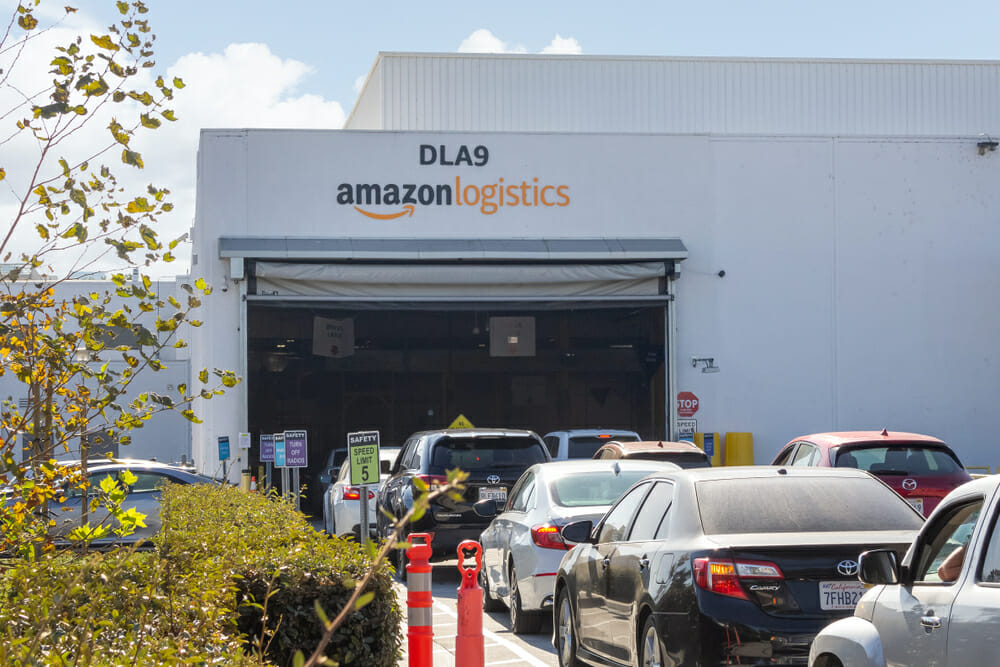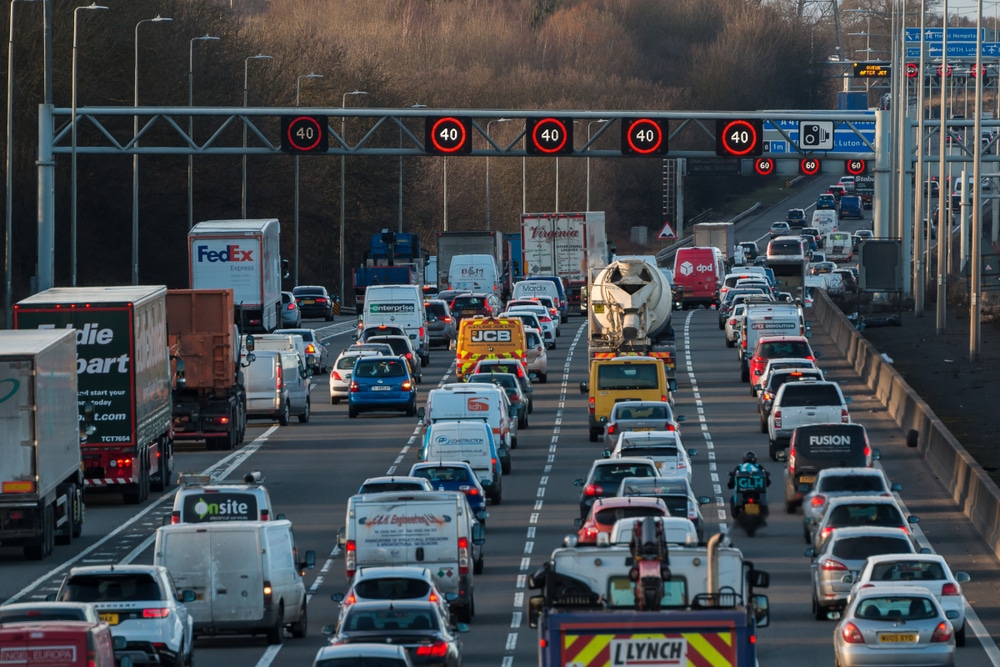Insight / Blog
What could the Uber ruling mean for parcel carriers?

Please note: I’m not a lawyer, and Doddle is not a law firm. We’re interested in this story because it could alter the parcel market in interesting ways, not because we have longstanding interest and/or expertise in employment law. For legal advice and definitive opinions on the legal status of parcel delivery drivers, look elsewhere!
After a protracted fight, Uber has lost its case at the UK’s highest court, which declared the appellant drivers to be workers, not contractors, effectively meaning Uber is now on the hook to provide protections like minimum wage, sick pay and holiday pay to a significant proportion of their driver fleet.
From the parcel industry’s perspective, there are three big questions here. Firstly, what does the judgment say about contractors and workers, and what tests are to be used to determine whether someone is one or the other? Secondly, is there a likelihood that this could lead to similar verdicts being applied to the contractors working for parcel carriers? And thirdly, if that did come to pass, what impact would that have on the market?
What does the decision say about drivers?
Let’s start at the start. This Wired piece summarises the judgment’s criteria for determining the drivers to be Uber’s workers (emphases ours.)
“Firstly, Uber sets the fare price and drivers are not permitted to charge more than the fare calculated by the Uber app. Judges determined that therefore, Uber dictates how much drivers are paid for the work they do.
Second, Uber imposes contracts and terms of service and drivers have no say in them. Third, once a driver has logged onto the Uber app, their choice is constrained by Uber by monitoring their acceptance rate and imposing “penalties” if too many trips are declined. Fourth, they found that Uber also exercises “significant control” over the way in which drivers deliver their services, using a passenger ratings system that impacts whether the driver can continue working for Uber.
Finally, they determined that Uber restricts communications between passenger and driver to the minimum necessary to perform the particular trip and takes active steps to prevent drivers from establishing any relationship with a passenger capable of extending beyond an individual ride.”
These tests are important, because it’s demonstrably going to be very hard for Uber to avoid meeting more or less all of them without significantly changing its business model. This means that while not all of its drivers are automatically classed as workers as a result of this legal challenge, it will struggle to avoid a significant percentage of drivers becoming classified as workers. That’s good news for the drivers, but bad news for Uber’s bottom line.
Could this apply to parcel delivery drivers?

On to the second question then. Let’s take those sentences in bold above and replace “Uber” with “Amazon Flex”, the Amazon gig economy delivery offering, to see what happens. (Okay, there will be a few other substitutions for it to make sense, stick with me.)
Amazon sets the rate per parcel and drivers are not permitted to charge more
Amazon dictates how much drivers are paid for the work they do
Amazon imposes contracts and terms of service and drivers have no say in them
Amazon also exercises “significant control” over the way in which drivers deliver their services
Amazon restricts communications between passenger and driver to the minimum necessary to perform the particular delivery
It seems hard to argue that Amazon’s Flex service and potentially other carriers who use “self-employed” drivers to deliver parcels don’t meet these same criteria. A self employed parcel carrier doesn’t deal directly with the customer or retailer like an Uber driver does with a passenger, but that may simply make it harder for the carriers to make the case that they’re truly self-employed. A delivery driver doesn’t set their rate per parcel – they accept a rate offered by a carrier. They don’t have the option of negotiating with the retailer for a price. The carrier dictates the pay they receive for their work, imposes contracts and terms of service that the drivers have no say in, and the carrier also exercises a degree of control over the manner in which drivers can deliver. The last bolded point is interesting – carriers typically don’t offer the consumer much access at all to the driver, though in some cases a delivery driver can call or text a number provided by the consumer. However, the actual customer of the carrier is not the recipient of the parcel, it’s the retailer they’re delivering for, and delivery drivers have no access to the retailer at all.
Applying these tests to carrier contractors suggests that they would be qualified as workers in many instances, much as has happened to Uber. There’s even a path one could imagine the cases following, from Uber in the first instance to UberEats or Deliveroo in the second, and from those food delivery services the gap is even smaller to a parcel carrier. However, just because it could plausibly happen does not make it a certainty that contractors working for delivery firms will end up being classified as workers. Even if it does happen, it will take time to work its way through appeals, et cetera. That shouldn’t stop us asking about what might happen in the parcel market if all this did come to pass.
What happens if self-employed or contractor delivery drivers are reclassified as workers?
Parcel carriers who currently use contractors would have higher costs on already thin margins, which could lead to rate increases. It would also increase the pressure on carriers to find ways of consolidating their deliveries, so as to reduce the cost per delivery and retain more margin. One way to balance the increased cost and need for consolidation would be to offer discounted rates to retailers for parcels delivered out-of-home (OOH), for example to locker banks or a pickup and dropoff (PUDO) location. This does happen already elsewhere but is not common practice in the UK market.
Such a shift would also be advantageous for those carriers who do not use or rely less heavily upon contracted drivers, who would not need to make any changes but would benefit from competition experiencing upheaval and higher costs. With similar cases having occurred in several European countries, some of the biggest beneficiaries could be national posts, who typically have unionised workforces with strong bargaining power, which has ensured that their delivery drivers and posties have wage security and benefits. One consequence of that is that posts have often faced higher costs in delivery than carrier competitors.
Uber fought this decision tooth and nail for the same reason it spent $200 million (alongside Lyft and other gig economy businesses) to pass Proposition 22 in California, which exempted them from new labour regulation that would have resulted in drivers being considered workers under the law. The fact that they did not have the cost of maintaining a workforce of ‘workers’ was a big part of their success in scaling up.
Delivery companies don’t have quite the same set of challenges that Uber has. Most of them make money, for one thing – Uber expects to lose more than $1 billion in 2020. Parcel carriers are also used to making big outlays of cash, because they need to invest in new capacity as parcel volumes grow. That type of expenditure is of course different to ongoing labour costs, but still demonstrates that they have some financial resilience. In short, it would not be likely to cripple parcel carriers – although it would certainly reduce their competitive edge in the short term.
In the longer term, though, a judgment like this being handed down to parcel carriers could even lead to some improvements in service and customer experience. When delivery workers are not facing intense time pressure to drop packages and move on, they’re more likely to deliver with care and less likely to haphazardly leave parcels in unsafe locations or with random neighbours. The increased cost of home delivery for these carriers could also lead to investment in alternative delivery methods, which is sorely needed for the long-term sustainability of ecommerce delivery.
Related articles
Important lessons from Leaders in Logistics 2024
Leaders in Logistics 24 dived into AI & automation, sustainability, changing ecommerce behaviours, emerging consumer expectations & predicted what the next decade had in store.
Postal results, reforms, and returns
Posts around the world are seeking reform, but how can they drive improved results in the short term?
Convenient and sustainable: developing an out-of-home delivery strategy
Sustainability has become a key decision factor for retailers - here's how carriers can stay ahead with an out-of-home delivery strategy that’s both sustainable and convenient for consumers












